Grow Peanuts at Home? Absolutely! Imagine the satisfaction of harvesting your own homegrown peanuts, ready to be roasted, turned into creamy peanut butter, or simply enjoyed as a healthy snack. It’s easier than you might think, and this DIY guide will walk you through every step of the process.
For centuries, peanuts have been a staple food in many cultures, particularly in South America, where they originated. They’ve journeyed across continents, becoming a beloved ingredient in cuisines worldwide. But did you know you don’t need a sprawling farm to enjoy the fruits (or rather, nuts!) of this versatile plant?
In today’s world, where we’re increasingly conscious of where our food comes from, grow peanuts at home offers a fantastic way to connect with nature and enjoy fresh, sustainable produce. Plus, let’s be honest, who can resist the bragging rights of saying, “I grew these myself!”? This DIY project is perfect for gardeners of all levels, and I’m excited to share my tried-and-true tips and tricks to help you succeed. Get ready to dig in and discover the joy of homegrown peanuts!
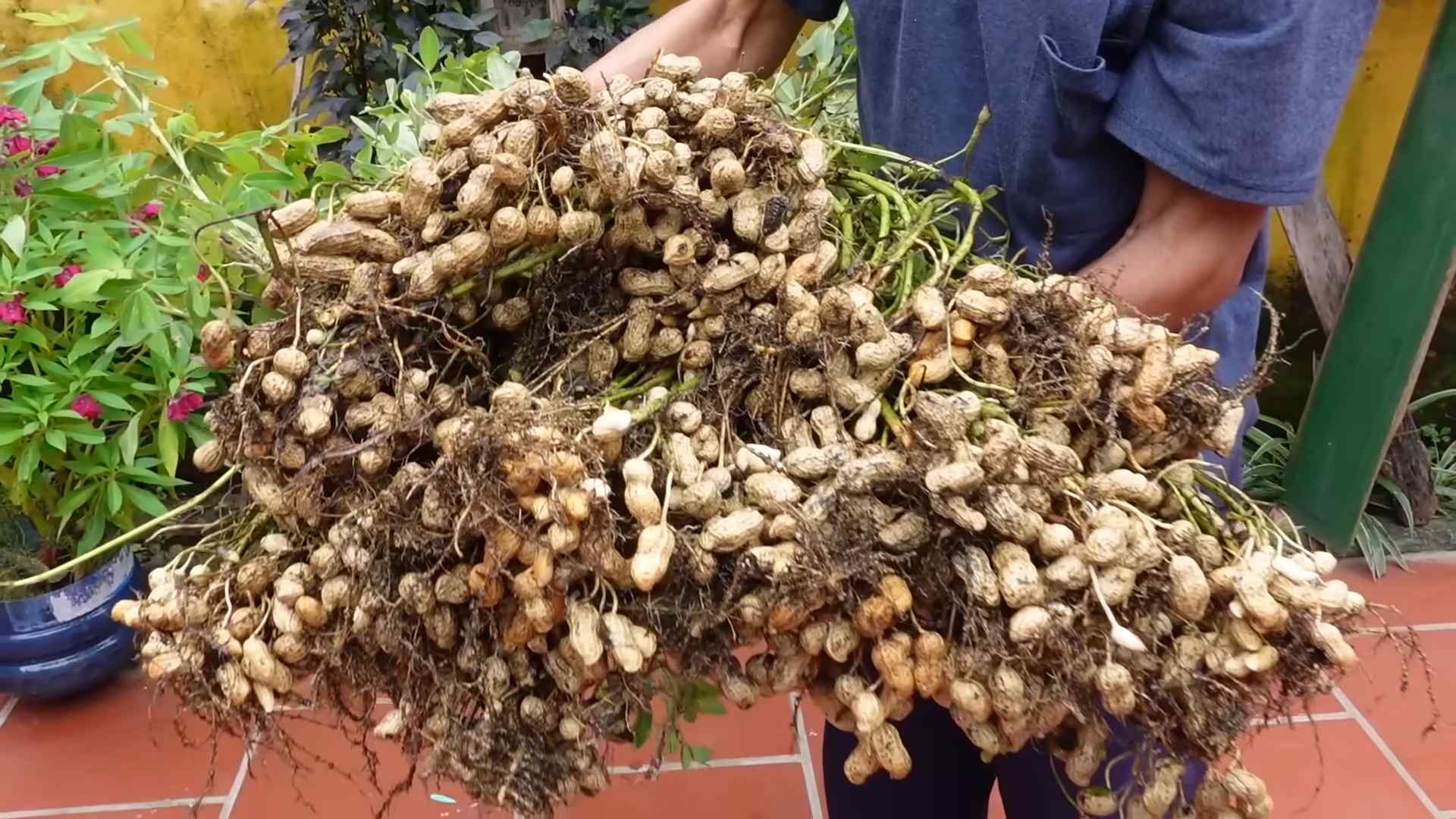
Grow Your Own Peanuts: A Beginner’s Guide
Hey there, fellow gardening enthusiasts! Ever thought about growing your own peanuts? It’s surprisingly easy and incredibly rewarding. Imagine the satisfaction of harvesting your own homegrown peanuts, roasting them up, and enjoying a delicious, healthy snack. I’m here to guide you through the entire process, from choosing the right peanuts to harvesting your bounty. Let’s get started!
Choosing Your Peanut Variety
Before you even think about planting, you need to decide which type of peanut you want to grow. There are four main types, each with its own characteristics:
* Virginia Peanuts: These are the large, often roasted-in-the-shell peanuts you see at ballgames. They have a distinctive flavor and are great for snacking.
* Runner Peanuts: These are the most commonly grown type in the US. They’re uniform in size and shape, making them ideal for peanut butter.
* Spanish Peanuts: These have smaller kernels and a reddish-brown skin. They have a higher oil content, giving them a richer flavor. They’re often used in candies and snacks.
* Valencia Peanuts: These have three or more small kernels per shell and are known for their sweet flavor. They’re great for boiling.
For beginners, I recommend starting with Virginia or Runner peanuts. They’re generally easier to grow and widely available. You can usually find them at your local garden center or online. Just make sure you’re buying raw, unroasted peanuts – roasted peanuts won’t germinate!
Preparing Your Peanut Patch
Peanuts need plenty of sunshine and well-drained soil. Here’s how to get your garden ready:
* Sunlight: Peanuts need at least 6-8 hours of direct sunlight per day. Choose a spot in your garden that gets plenty of sun.
* Soil: Peanuts prefer sandy loam soil that’s loose and well-draining. Heavy clay soil can be amended with compost and sand to improve drainage.
* Soil pH: The ideal soil pH for peanuts is between 6.0 and 6.5. You can test your soil pH with a home testing kit or by sending a sample to your local agricultural extension office.
* Fertilizing: Peanuts are legumes, which means they can fix nitrogen from the air. However, they still benefit from a balanced fertilizer. Before planting, work in a fertilizer that’s low in nitrogen and higher in phosphorus and potassium (like a 5-10-10).
Planting Your Peanuts
Now for the fun part – planting! Here’s how to get your peanuts in the ground:
1. Timing: Peanuts need a long, warm growing season (around 120-150 days). Plant them after the last frost, when the soil temperature is consistently above 65°F (18°C). I usually wait until late spring or early summer.
2. Soaking: To speed up germination, soak your peanut seeds in water for a few hours before planting. This will help soften the shells and encourage sprouting.
3. Spacing: Plant your peanuts about 6-8 inches apart in rows that are 2-3 feet apart. This gives them plenty of room to spread out and develop their pods.
4. Depth: Plant the peanuts about 1-2 inches deep. Cover them with soil and gently water them in.
5. Watering: Keep the soil consistently moist, but not waterlogged, until the seedlings emerge.
Caring for Your Peanut Plants
Once your peanut plants are up and growing, here’s how to keep them healthy and productive:
* Watering: Water your peanut plants regularly, especially during dry spells. Aim for about 1 inch of water per week.
* Weeding: Keep your peanut patch free of weeds. Weeds compete with the peanut plants for nutrients and water. Hand-pulling weeds is the best option, as herbicides can damage the peanut plants.
* Hilling: As the peanut plants grow, they’ll start to produce “pegs” – small stems that grow down from the plant and into the soil. These pegs are where the peanuts will develop. To encourage peanut production, hill the soil around the base of the plants, covering the pegs with soil. This helps protect the developing peanuts and keeps them moist. I usually do this a couple of times during the growing season.
* Fertilizing: After the plants start to flower, you can give them another dose of fertilizer. Again, choose a fertilizer that’s low in nitrogen and higher in phosphorus and potassium.
* Pest Control: Peanuts can be susceptible to pests like aphids, spider mites, and leafhoppers. Inspect your plants regularly and take action if you see any signs of infestation. Insecticidal soap or neem oil can be effective for controlling these pests.
* Disease Control: Peanuts can also be affected by diseases like leaf spot and rust. To prevent these diseases, make sure your plants have good air circulation and avoid overhead watering. If you see signs of disease, you can treat your plants with a fungicide.
Harvesting Your Peanuts
The moment you’ve been waiting for! Here’s how to harvest your peanuts:
1. Timing: Peanuts are usually ready to harvest in the fall, about 120-150 days after planting. A good indicator is when the leaves start to turn yellow and the plants begin to die back. I usually check a few plants to see if the peanuts are mature before harvesting the entire crop.
2. Digging: Use a garden fork or shovel to carefully dig up the peanut plants. Be gentle, as you don’t want to damage the peanuts.
3. Shaking: Shake off as much soil as possible from the plants.
4. Drying: Hang the peanut plants upside down in a well-ventilated area to dry for 2-4 weeks. This allows the peanuts to cure and develop their flavor. I usually hang them in my garage or shed.
5. Picking: Once the plants are dry, you can pick the peanuts off the vines.
6. Cleaning: Wash the peanuts in water to remove any remaining soil.
7. Drying (Again!): Spread the peanuts out on a screen or tray to dry completely. This can take several days. Make sure they’re completely dry before storing them, or they’ll mold.
Storing Your Peanuts
Proper storage is essential to keep your peanuts fresh and delicious. Here’s how to store them:
* In-Shell Peanuts: Store in-shell peanuts in a cool, dry place in an airtight container. They can last for several months.
* Shelled Peanuts: Store shelled peanuts in the refrigerator or freezer in an airtight container. They can last for several months in the refrigerator and up to a year in the freezer.
Roasting Your Peanuts
Now for the best part – roasting your homegrown peanuts! Here’s how I do it:
1. Preheat: Preheat your oven to 350°F (175°C).
2. Prepare: Spread the peanuts out in a single layer on a baking sheet.
3. Roast: Roast the peanuts for 20-25 minutes, or until they’re golden brown and fragrant. Stir them occasionally to ensure even roasting.
4. Cool: Let the peanuts cool completely before eating.
You can also roast peanuts in a skillet on the stovetop. Just heat a skillet over medium heat and add the peanuts. Cook, stirring frequently, until they’re golden brown and fragrant.
Boiling Your Peanuts
If you grew Valencia peanuts, you might want to try boiling them! Here’s how:
1. Wash: Wash the peanuts thoroughly.
2. Boil: Place the peanuts in a large pot and cover them with water. Add plenty of salt (about 1/4 cup per gallon of water).
3. Simmer: Bring the water to a boil, then reduce the heat and simmer for 2-4 hours, or until the peanuts are soft and salty.
4. Drain: Drain the peanuts and enjoy!
Boiled peanuts are best eaten warm. They’re a popular snack in the Southern United States.
Troubleshooting
Even with the best planning, things can sometimes go wrong. Here are a few common problems you might encounter when growing peanuts and how to fix them:
* Poor Germination: If your peanut seeds aren’t germinating, make sure the soil temperature is warm enough and that the soil is consistently moist. You can also try soaking the seeds in water for a longer period of time.
* Yellowing Leaves: Yellowing leaves can be a sign of nutrient deficiency. Try fertilizing your plants with a balanced fertilizer.
* Small Peanuts: Small peanuts can be caused by poor soil or insufficient watering. Make sure your soil is well-
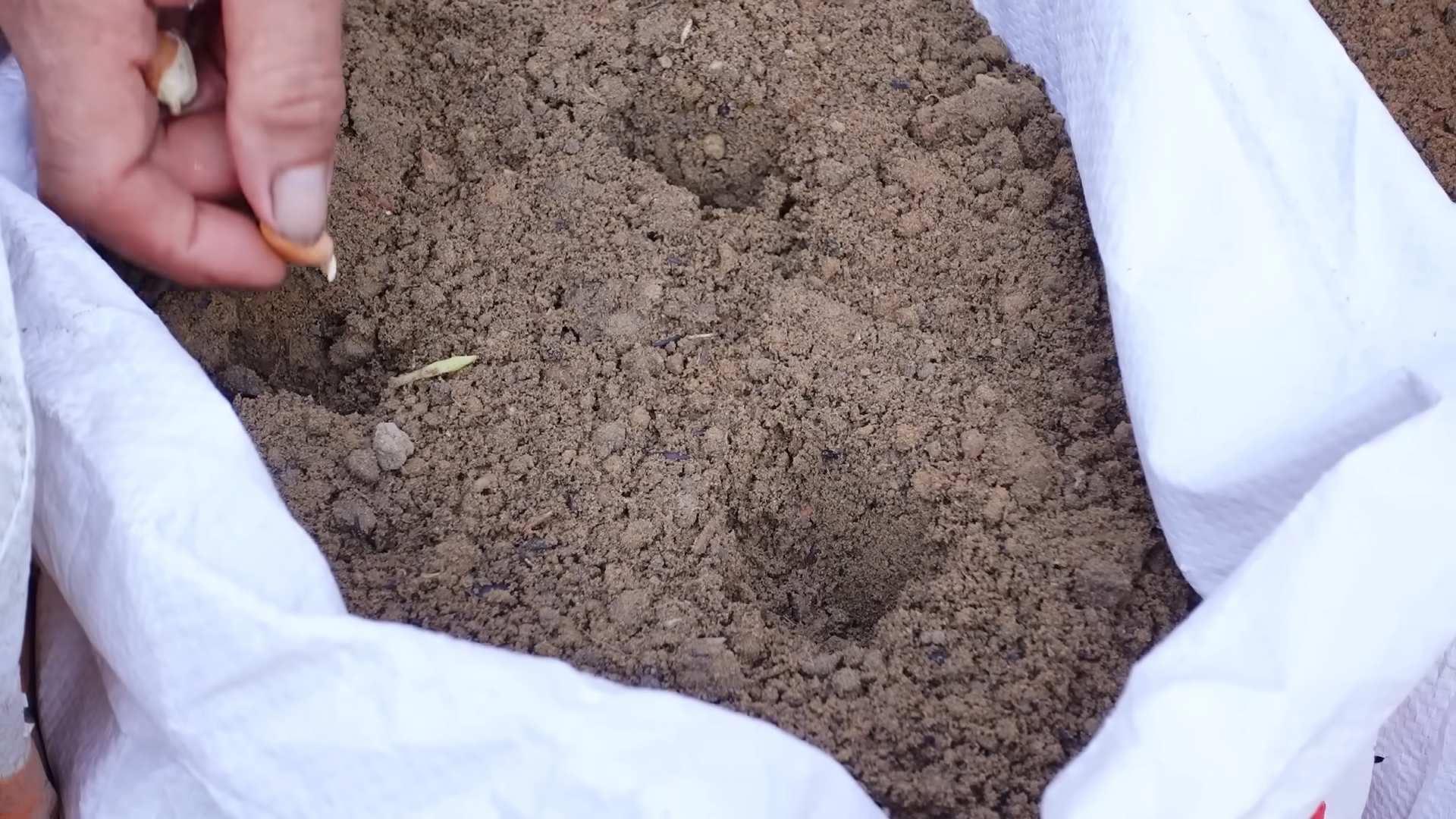
Conclusion
So, there you have it! Growing peanuts at home is not only achievable, but it’s also a deeply rewarding experience that connects you directly to the source of this delicious and versatile legume. Forget the store-bought peanuts for a while and embrace the satisfaction of harvesting your own homegrown crop. This DIY trick transforms your garden into a peanut patch, offering a unique and educational opportunity for the whole family.
Why is this a must-try? Because it’s fresher, more flavorful, and allows you complete control over the growing process, ensuring you’re consuming peanuts free from unwanted chemicals and additives. Imagine the taste difference – a burst of earthy sweetness that you simply can’t find in commercially produced peanuts. Plus, it’s a fantastic conversation starter and a source of immense pride.
Beyond the basic method outlined, there’s plenty of room for experimentation. Try different peanut varieties to discover your favorite flavor profile. Valencia peanuts are known for their sweetness, while Virginia peanuts are prized for their large size. Spanish peanuts offer a nutty flavor and are great for roasting. You can also explore container gardening if you have limited space, ensuring you choose a large enough pot with adequate drainage. Consider companion planting with herbs like basil or marigolds to deter pests and enhance growth.
Don’t be afraid to get your hands dirty and embrace the learning process. Growing peanuts at home is a journey, and every step, from planting the seeds to harvesting the mature pods, is an opportunity to connect with nature and appreciate the magic of gardening.
We wholeheartedly encourage you to try this DIY trick and experience the joy of growing your own peanuts. It’s a simple, sustainable, and incredibly satisfying way to enjoy this beloved snack. Once you’ve harvested your first crop, share your experience with us! We’d love to hear about your successes, challenges, and any variations you’ve tried. Post photos of your peanut plants, share your roasting tips, and let’s create a community of home peanut growers. Let us know what kind of soil you used, what challenges you faced, and how you overcame them. Your insights could help other aspiring peanut farmers achieve their own homegrown success.
This is more than just a recipe; it’s an invitation to cultivate a deeper connection with your food and the natural world. So, grab some peanut seeds, prepare your garden, and get ready to experience the unparalleled satisfaction of growing your own delicious, homegrown peanuts. Happy gardening!
Frequently Asked Questions (FAQ)
What kind of soil is best for growing peanuts?
Peanuts thrive in well-drained, sandy loam soil. This type of soil allows the developing peanut pods to easily penetrate the ground. Avoid heavy clay soils, as they can restrict pod development and lead to misshapen peanuts. The ideal soil pH is between 6.0 and 6.5. Before planting, consider amending your soil with compost or other organic matter to improve drainage and fertility. If your soil is particularly heavy, you can incorporate sand to improve its texture. A soil test can provide valuable insights into your soil’s nutrient levels and pH, allowing you to make necessary adjustments before planting.
How much sunlight do peanut plants need?
Peanut plants require at least 6-8 hours of direct sunlight per day to thrive. Choose a planting location that receives ample sunlight throughout the growing season. Insufficient sunlight can lead to stunted growth, reduced yields, and increased susceptibility to diseases. If you’re growing peanuts in containers, make sure to place them in a sunny spot or supplement with grow lights if necessary. Observe your plants regularly to ensure they are receiving enough sunlight.
How often should I water my peanut plants?
Peanut plants need consistent moisture, especially during germination and pod development. Water deeply and regularly, ensuring the soil remains consistently moist but not waterlogged. Avoid overhead watering, as it can promote fungal diseases. Drip irrigation or soaker hoses are ideal for delivering water directly to the roots. During dry spells, you may need to water more frequently. Monitor the soil moisture levels regularly and adjust your watering schedule accordingly. As the plants mature and the pods begin to develop, you can reduce watering slightly.
When is the best time to plant peanuts?
The best time to plant peanuts is after the last frost, when the soil temperature has warmed to at least 65°F (18°C). Peanuts are warm-season crops and are sensitive to frost. Planting too early can result in poor germination and stunted growth. In most regions, this is typically in late spring or early summer. Check your local weather forecast and soil temperature before planting. You can also start peanut seeds indoors 4-6 weeks before the last frost and transplant them outdoors once the weather warms up.
How long does it take for peanuts to mature?
Peanuts typically take 120-150 days to mature, depending on the variety and growing conditions. The exact time will vary depending on your climate and the specific peanut variety you are growing. You’ll know your peanuts are ready to harvest when the foliage begins to yellow and the pods are mature and plump. You can also dig up a few plants to check the pod development. The inside of the peanut shells should be dark and the kernels should be fully developed.
What are some common pests and diseases that affect peanut plants?
Peanut plants can be susceptible to various pests and diseases, including aphids, spider mites, leaf spot, and white mold. Regularly inspect your plants for signs of infestation or disease. Use organic pest control methods, such as insecticidal soap or neem oil, to control pests. Ensure good air circulation around your plants to prevent fungal diseases. Crop rotation and proper sanitation can also help prevent disease outbreaks. If you notice any signs of disease, remove the affected plants immediately to prevent the spread.
How do I harvest peanuts?
To harvest peanuts, carefully dig up the entire plant, being careful not to damage the pods. Gently shake off any excess soil and allow the plants to dry in the sun for several days. This process, known as curing, helps to improve the flavor and texture of the peanuts. Once the plants are dry, you can remove the peanuts from the vines. Store the peanuts in a cool, dry place.
Can I grow peanuts in containers?
Yes, you can grow peanuts in containers, but you’ll need to choose a large container with adequate drainage. A container that is at least 18 inches in diameter and 12 inches deep is recommended. Use a well-draining potting mix and ensure the container receives plenty of sunlight. Water regularly and fertilize as needed. Container-grown peanuts may require more frequent watering and fertilization than those grown in the ground.
How do I roast my homegrown peanuts?
Roasting your homegrown peanuts is easy! Preheat your oven to 350°F (175°C). Spread the peanuts in a single layer on a baking sheet. Roast for 15-20 minutes, or until the peanuts are golden brown and fragrant. Stir the peanuts occasionally to ensure even roasting. Allow the peanuts to cool completely before storing them in an airtight container. You can also roast peanuts in a skillet on the stovetop, stirring constantly until they are roasted to your liking.
What are some creative ways to use my homegrown peanuts?
The possibilities are endless! You can enjoy them roasted as a snack, use them in baking, make your own peanut butter, or add them to salads and stir-fries. You can also use them to make peanut brittle, peanut sauce, or peanut soup. Experiment with different recipes and find your favorite ways to enjoy your homegrown peanuts. Consider gifting some of your harvest to friends and family – they’ll be impressed by your gardening skills!

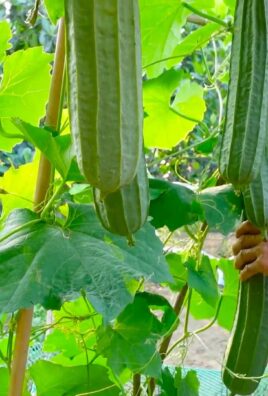
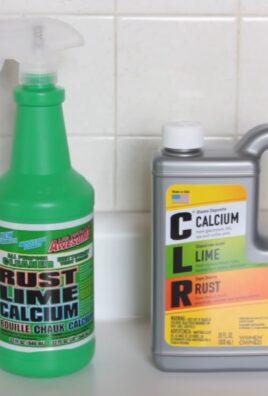
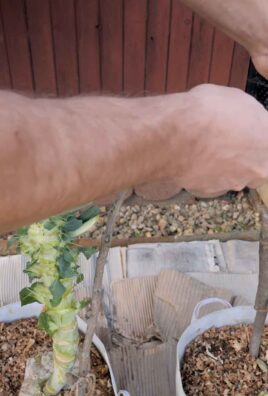
Leave a Comment